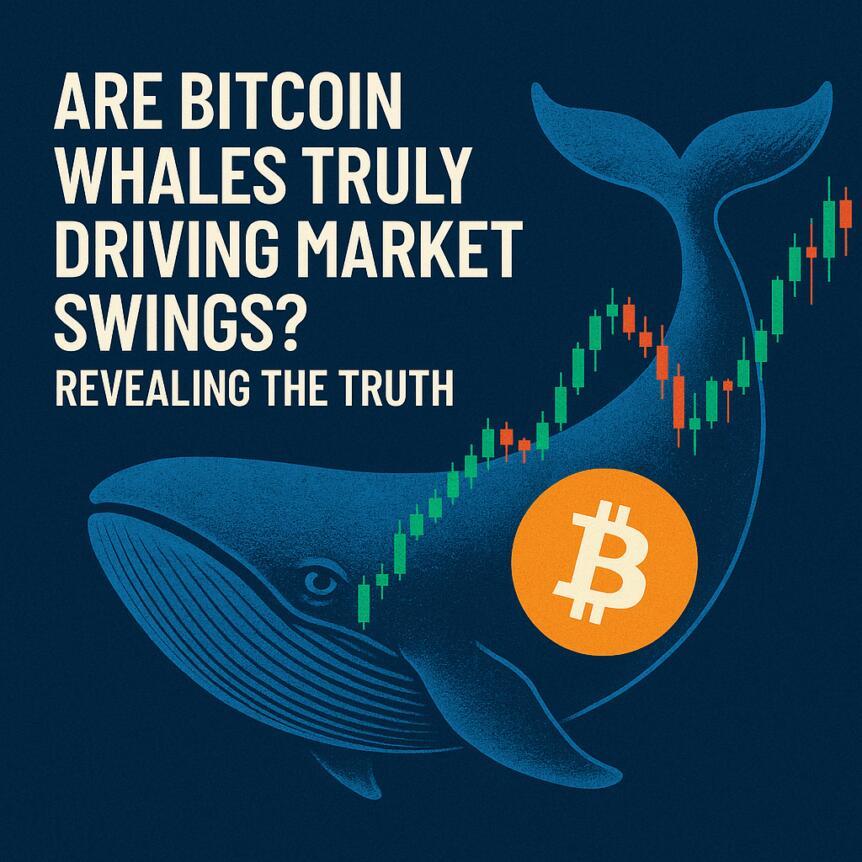
Are Bitcoin Whales Truly Driving Market Swings? Revealing The Truth
- Since 2024, Bitcoin's daily price swings are predominantly driven by spot ETF inflows and outflows. With exchange balances near six-year lows, large orders tend to have a greater impact on market prices. Major holders often split trades or use OTC desks, reducing the visibility of“wallet-moved” shocks. Market microstructure factors like funding rates, open interest, and macroeconomic data influence daily direction more than any single whale activity.
In the crypto ecosystem, a whale typically refers to an on-chain entity controlling at least 1,000 BTC. Many analytics dashboards monitor clusters holding between 1,000 and 5,000 BTC. These entities are usually groups of addresses controlled by the same owner, rather than individual wallets, with algorithms used to identify and group co-spends or change addresses. This distinction is important because raw“rich list” rankings can overstate concentration, as large exchanges, custodians, and payment processors operate thousands of wallets. Consequently, expert analysis tends to focus on entity-based metrics for a clearer understanding of actual market influence.
Recent data indicates that the number of entities holding at least 1,000 BTC has surpassed 1,670 - the highest since early 2021.
Bitcoin ownership landscape and liquidityThe advent of U.S. spot ETFs has shifted a substantial part of the publicly visible Bitcoin supply into custodial pools. BlackRock 's iShares Bitcoin Trust ETF alone manages over 800,000 BTC on behalf of investors, with overall ETF holdings governing about 6.4% of the total supply. Meanwhile, corporations like MicroStrategy report holdings of around 640,000 BTC. Miners, exchanges, and long-term holders constitute the rest of the top clusters.
Additionally, on centralized exchanges, Bitcoin balances have fallen to a six-year low of approximately 2.83 million BTC - a reduction that amplifies the impact of large orders on prices. Such decreased liquidity can lead to sharper price swings and heightened volatility during trading sessions.
Market movement and intraday influence of whalesWhile big players can influence intraday price swings through large orders, many opt to execute trades off-exchange via OTC desks to mask their activity. This practice reduces the apparent impact on public order books. Conversely, whales tend to sell into strength during bullish rallies, especially when smaller traders are confidently buying. Historical patterns from recent years indicate that large holders often act as a moderating force, tempering rallies rather than fueling them.
For example, in 2025, as Bitcoin soared past $120,000 amid ETF inflows, some mega-whales booked profits at key levels, with intraday momentum aligning more closely with ETF flows and liquidity conditions than individual whale movements.
Managing daily market signalsSince early 2024, ETF inflows have become a reliable daily indicator for Bitcoin. Strong weekly inflows often lead to new highs, while negative flows can mark downturns. Thin liquidity, combined with tightening exchange balances, makes the market more sensitive to even modest buy or sell orders. Additionally, macroeconomic trends such as the dollar index, U.S. yields, and overall risk appetite heavily influence crypto pricing during quieter periods or market surges.
A practical data checklist includes monitoring ETF flow metrics, exchange liquidity, funding rates, open interest, and macro indicators, enabling traders to form a comprehensive view of daily momentum.
Are whales still the market's kingmakers?While whales can influence short-term moves, their capacity to steer the overall market direction for the day has diminished. Today, most large holders execute smaller trades and route transactions through OTC desks, reducing visible impact. Since 2024, ETF flows and broad trading volumes pass through institutional channels as the primary drivers of daily trends. Particularly when liquidity is limited, even small shifts from retail or market makers can cause outsized price moves, especially amid macro-driven market sentiment.
In summary, understanding the interplay of ETF liquidity, macroeconomic factors, and trader positioning is essential for navigating the current crypto environment effectively, rather than focusing solely on whale activity as the market's sole determinant.
Crypto Investing Risk Warning
Crypto assets are highly volatile. Your capital is at risk. Don't invest unless you're prepared to lose all the money you invest.
Legal Disclaimer:
MENAFN provides the
information “as is” without warranty of any kind. We do not accept
any responsibility or liability for the accuracy, content, images,
videos, licenses, completeness, legality, or reliability of the information
contained in this article. If you have any complaints or copyright
issues related to this article, kindly contact the provider above.


















Comments
No comment